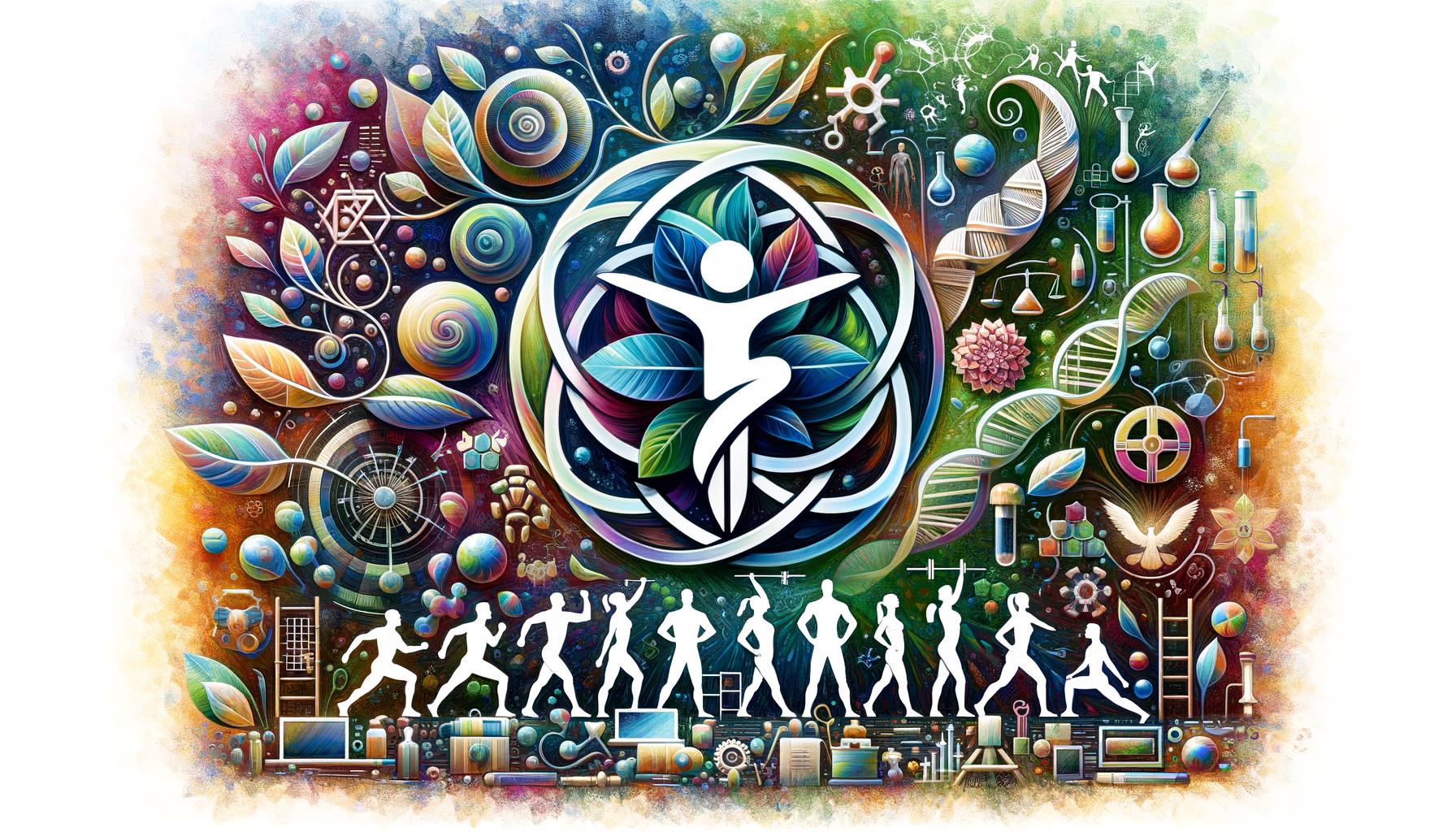In the vast universe of fitness, where the stars are endless methods and the galaxies are myriad goals, there lies a foundational planet, often overlooked yet brimming with potential – Calisthenics. This ancient modality, rooted in the Greek words “kalos” (beautiful) and “sthenos” (strength), is not only about achieving an aesthetic physique but also about harnessing the power of gravity and exploring the limits of body mobility and strength. As we embark on this journey, “Beginner’s Guide to Calisthenics: First Steps to Fitness,” we invite you to rediscover the primal joy of movement, to sculpt not just your body but also your discipline and resilience. Forget the intimidating jargon, the expensive equipment, and the labyrinth of machines that dominate modern gyms. Let’s strip fitness down to its core, starting with the weight of our own bodies, a pinch of gravity, and a dash of dedication. Whether you’re a seasoned athlete looking to expand your horizons or a newcomer on the brink of starting your fitness odyssey, this guide aims to plant the seeds of a lifelong calisthenic journey, guiding you gently from the soil of basics to the sky of advanced maneuvers. Welcome to your first steps to fitness, where every push-up is a discovery and every pull-up a victory. Let’s begin.
Table of Contents
- Embarking on Your Calisthenics Journey: Understanding the Basics
- Evaluating Your Starting Point: Tailoring Your Routine
- Building a Solid Foundation: Core Exercises for Beginners
- Progressing Safely: Techniques to Avoid Injury
- Staying Motivated: Setting Goals and Tracking Progress
- Gear and Gadgets: Enhancing Your Calisthenics Workout
- In Summary
Embarking on Your Calisthenics Journey: Understanding the Basics
Diving into the world of calisthenics is like unlocking a secret chamber of physical prowess, where the treasure is not just the destination but the journey itself. Before taking that leap, however, it’s crucial to lace up your boots with the basics. A foundational understanding not only prevents injury but also ensures a smooth and enjoyable adventure. Calisthenics revolves around leveraging gravity and your body weight to build strength, endurance, and flexibility. Think of your body as the most advanced piece of gym equipment you’ll ever need, always accessible and infinitely adaptable. This form of exercise celebrates the art of movement, with each exercise sculpting the body’s muscles and enhancing overall physical health.
Starting with the basics, here are some essential exercises that act as the cornerstone for any calisthenics enthusiast:
- Push-ups: A classic exercise that strengthens the chest, shoulders, and triceps. Perfecting your form here lays a solid foundation for advanced movements.
- Pull-ups: Work the back, arms, and core. These are challenging but crucial for developing upper body strength and endurance.
- Squats: Target the legs and glutes, improving lower body strength and stability. They also offer a functional benefit, enhancing movements in daily life.
- Planks: A powerhouse move for core strengthening, which is essential for overall stability and performance in calisthenics.
It’s important to note that progression is key. As you get comfortable with these exercises, you can explore variations to challenge yourself further and keep your training dynamic. Here is a simple table to guide your initial journey:
| Exercise | Focus Area | Benefit |
|---|---|---|
| Push-ups | Chest, Shoulders, Triceps | Upper Body Strength |
| Pull-ups | Back, Arms, Core | Endurance & Strength |
| Squats | Legs, Glutes | Lower Body Stability |
| Planks | Core | Core Strengthening |
As you embrace these exercises, remember that calisthenics is not just about pushing your limits; it’s about understanding your body, respecting its pace, and enjoying the process. Welcome to the beginning of a transformative journey that not only reshapes your physique but also redefines your relationship with fitness.
Evaluating Your Starting Point: Tailoring Your Routine
Before diving headfirst into the vast world of calisthenics, it’s crucial to take a step back and assess where you currently stand. This isn’t just about figuring out how many push-ups you can do in a minute; it’s about understanding your body’s strengths, weaknesses, and any physical limitations you might have. To tailor a calisthenics routine that suits you best, start by listing the exercises you’re already familiar with and noting how comfortably you can perform them. Identify your baseline for key exercises such as push-ups, pull-ups, squats, and planks. Are there movements that feel particularly awkward or difficult? This exercise of self-assessment is not to discourage you but to give you a clear starting point for growth.
After establishing your starting point, it’s time to craft a routine that aligns with your fitness goals while taking into consideration your current capabilities. Begin with a mix of exercises that challenge you but are still achievable. For instance, if regular push-ups are currently beyond your reach, start with wall push-ups or knee push-ups. The aim is to gradually build your strength and confidence without risking injury. Below is a simple table to help you visualize a potential starting routine, considering a beginner’s flexibility, strength, and endurance levels. Remember, consistency is key, and as you progress, so too should your routine, increasingly incorporating more challenging variations of the foundational exercises.
| Day | Exercise | Reps & Sets | Notes |
|---|---|---|---|
| Monday | Knee Push-ups | 3 sets of 8-10 reps | Focus on form |
| Wednesday | Bodyweight Squats | 3 sets of 12-15 reps | Keep back straight |
| Friday | Planks | 3 x 30 seconds | Engage core |
By evaluating your starting point and tailoring your routine to meet your current abilities, you set the stage for sustainable progress and success in your calisthenics journey. This process of customization ensures that you’re not just copying a one-size-fits-all program but actively engaging in a fitness regimen designed just for you.
Building a Solid Foundation: Core Exercises for Beginners
Embarking on your calisthenics journey, the cornerstone of your fitness regimen lies in fortifying the core—the powerhouse of your body. The core stabilizes your torso, lays the foundation for strong movements, and generates the balance needed for advanced exercises. In the realm of calisthenics, a robust core not only enhances performance but also significantly reduces the risk of injury. Here, we delve into a repertoire of beginner-friendly core exercises designed to ignite your internal engine, paving the way for a harmonious blend of strength and flexibility.
Begin with the classics: the plank and its variations. The plank is a quintessential pose that not only tightens the core but also trains your shoulders, chest, and legs. Start in a push-up position, but instead of lowering yourself down, hold the position with your arms straight. Aim for 30 seconds, gradually increasing the duration as your endurance improves. Elevate your routine with side planks to target the obliques, enhancing your core’s ability to stabilize. Following the plank, engage in lying leg raises. Lie flat on your back, legs straight, and slowly raise your legs to a 90-degree angle before lowering them back down without allowing them to touch the ground. This movement not only chisels the lower abdominals but also fortifies the hip flexors. Lastly, Russian twists serve as the cherry on top; sitting on the ground, lean back slightly, lift your feet (if possible), and rotate your torso side to side. This dynamic movement adds an explosive layer to your core stabilization, igniting the entire spectrum of your abdominal muscles.
| Exercise | Description | Reps/Set |
|---|---|---|
| Plank | Hold a push-up position with arms straight, focusing on keeping your body in a straight line. | 30 seconds |
| Side Plank | From a plank, shift to your side stacking your feet and lifting your hips, targeting the obliques. | 20 seconds each side |
| Lying Leg Raises | Lie on your back, legs straight, lift them to 90-degrees, then slowly lower back down. | 10-15 reps |
| Russian Twists | Sitting, lean back slightly with feet up if possible, and rotate your torso side to side. | 20 reps (10 each side) |
Harnessing these foundational exercises will not only sculpt a resilient core but also fuel your journey through the vast universe of calisthenics, ensuring each step is taken with strength and confidence. Remember, mastery of these core elements is essential, setting the stage for a fitness odyssey that is both profound and transformative.
Progressing Safely: Techniques to Avoid Injury
Embarking on your calisthenics journey brings with it a tide of excitement and anticipation. However, the enthusiasm to push your boundaries can sometimes eclipse the paramount importance of safety precautions. Injuries, unfortunately, are not badges of honor that showcase your dedication, but rather hurdles that can set you back on your journey to achieving your fitness goals. Maintaining a focus on safe practice is not just advisable; it’s imperative. Below are some invaluable techniques that will help keep you on the path to progress, unmarred by preventable injuries.
Firstly, warm-up exercises are your best allies. Engaging in a proper warm-up routine prepares your body for the upcoming physical exertion by gradually increasing heart rate and circulation, thereby loosening the joints and increasing blood flow to the muscles. This preparation is crucial, as it significantly reduces the risk of injuries. Consider incorporating exercises such as jumping jacks, arm circles, and leg swings.
Secondly, it’s crucial to listen to your body. While it’s normal to experience some level of discomfort when starting out with calisthenics, there’s a thin line between pushing your limits and pushing into the danger zone. Recognizing the difference between ‘good’ pain—such as the burn of a challenging new exercise—and ‘bad’ pain—indicative of strain or injury—is essential. Here’s a simple guideline:
| Type of Pain | Description | Action |
|---|---|---|
| Good Pain | Muscle fatigue and soreness during and after exercise | Monitor, but generally safe to continue |
| Bad Pain | Sharp, acute pain during exercise; joint pain; pain that persists or worsens | Stop and seek medical advice |
Implementing these strategies will not only safeguard your physical well-being but also enhance your calisthenics journey, making every step forward a sustainable one. Remember, the goal is not just to reach new heights in your fitness endeavors but to do so in a way that ensures you can enjoy the journey for as long as you desire.
Staying Motivated: Setting Goals and Tracking Progress
Embarking on the journey of calisthenics can sometimes feel like navigating through an enigmatic forest, where the path to fitness is twisted with challenges and temptations to quit. But here’s your compass and map – goal setting and progress tracking. Identify your destination by setting clear, achievable goals. It could be mastering a full pull-up, touching your toes without bending your knees, or holding a 30-second plank. Like setting the pins on a treasure map, these goals will guide your workout routine, ensuring you’re not just wandering in the fitness wilderness.
Start your adventure by keeping a progress journal. This isn’t just any diary; think of it as your personal epic, chronicling the trials, triumphs, and dragons (metaphorically speaking) that you slay along the way. Each day, jot down what you did for your workout, how you felt, and any personal bests you achieved. To simplify, consider the following tracker:
| Week | Exercise | Reps/Sets/Duration | Notes (Personal Best, etc.) |
|---|---|---|---|
| 1 | Push-ups | 3 sets of 5 | Felt strong! |
| 1 | Squats | 2 sets of 8 | Struggled with form. |
| 2 | Plank | 30 seconds | New personal best! |
Embrace this progression and recall it during moments of doubt. By visually witnessing your improvement over time, you’ll be less inclined to dismiss the strides you’ve made, no matter how small they might seem. Track, reflect, and celebrate each victory – this is the essence of staying motivated on your quest towards mastering calisthenics.
Gear and Gadgets: Enhancing Your Calisthenics Workout
While embarking on your calisthenics journey, having the right gear can not only enhance your workouts but also ensure safety and improve efficiency. Resistance bands, for instance, are a versatile tool that can help beginners progress into more challenging movements. They assist by providing support and decreasing the load on your muscles in exercises like pull-ups or dips. On the other hand, gymnastics rings introduce an element of instability, increasing muscle engagement and improving strength and coordination in a wide range of movements. Including these pieces of equipment in your routine can significantly accelerate your progress while keeping the workouts interesting and dynamic.
To keep track of your progress and maintain motivation, investing in a quality workout mat and a reliable fitness tracker can make a world of difference. A good mat offers the necessary cushioning and grip for ground exercises such as planks and push-ups, reducing the risk of injury. Meanwhile, a fitness tracker keeps a log of your activities, heart rate, and calories burned, providing valuable feedback and serving as a personal trainer on your wrist. Below is a simplistic table showcasing the essentials to kickstart your calisthenics regimen:
| Essential Gear | Function | Benefit |
|---|---|---|
| Resistance Bands | Decrease load, assist in exercises | Support, progression |
| Gymnastics Rings | Instability, increased muscle engagement | Strength, coordination |
| Workout Mat | Cushioning, grip for ground exercises | Safety, comfort |
| Fitness Tracker | Activity, heart rate, calorie monitoring | Motivation, feedback |
Embracing these gadgets and gear can significantly boost the effectiveness of your calisthenics regimen, allowing you to achieve your fitness goals in a safer, more efficient manner. As you grow stronger and more confident in your abilities, these tools will continue to support and challenge you, making every workout an opportunity for improvement.
In Summary
And there you have it, the curtain falls on your first act in the grand play of calisthenics. With the foundation laid and the initial steps taken, you are no longer merely an audience member in the world of fitness; you are now an active participant, ready to sculpt your body and mind through the art of movement. Remember, this guide is but a compass in an uncharted jungle of physical excellence. Each push-up, every pull-up, and all the planks in between are steps on a path that you pave for yourself.
As you venture forward, know that the journey of a thousand miles didn’t begin with a sprint, but with a single, deliberate step. The beauty of calisthenics lies in its simplicity and the profound transformation it promises to those who persist. Armed with the knowledge and insights from this beginner’s guide, you are now equipped to embark on a voyage of self-discovery and empowerment.
So, hold your head high, embrace the challenge, and push your limits. The stage is set, and the audience of life awaits your performance. Let each movement be a testament to your resilience and each breath a celebration of progress. For the world of calisthenics is vast, and your potential within it, infinite.
As we draw the curtain on this introductory chapter, remember that every expert was once a beginner. With tenacity, patience, and an unyielding will to improve, you too can ascend to heights unimagined. The path to fitness and well-being is a lifelong journey—may yours be marked by strength, grace, and an ever-burning torch of curiosity. To fitness, to health, and beyond—the stage is yours.
Welcome to the world of calisthenics.






Leave a Reply